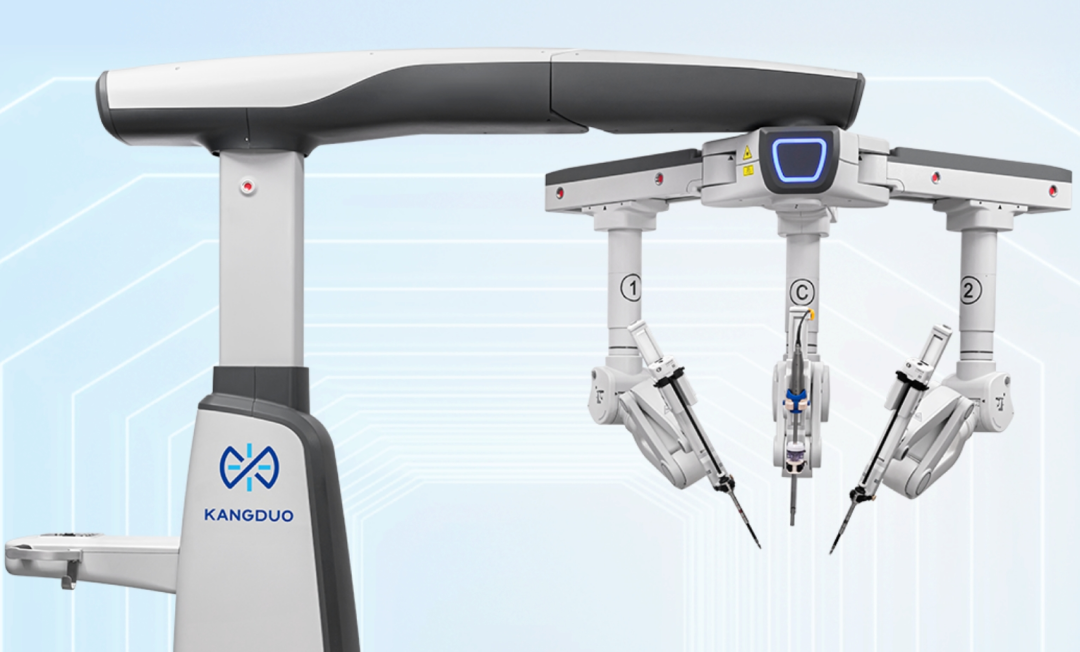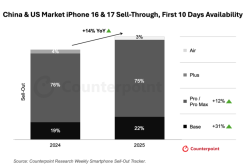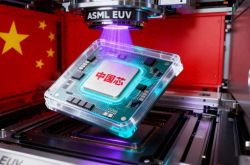Harbin's Super Unicorn Emerges: Annual Revenue of Just RMB 59,400, Valuation of RMB 8.3 Billion
![]() 03/07 2025
03/07 2025
![]() 611
611

Author: Huataishi, Pencil News
Amid the convergence of technology and capital, the IPO journey of Harbin SiZerui Intelligent Medical Devices Co., Ltd. (hereinafter referred to as "SiZerui") resembles a paradoxical business experiment: with total revenue of less than RMB 2 million over three years, it knocked on the door of the STAR Market with a valuation of RMB 8.36 billion. Despite its core product not yet being commercially scaled, it has attracted significant investments from capital giants such as Shenzhen Capital Group and Everbright Red Soil.
Founded in 2013, this surgical robot enterprise has epitomized the "burn money for the future" survival rule in the tech sector, incurring a loss of RMB 370 million. From 2020 to 2022, its annual revenue hovered between RMB 660,000 and RMB 59,400, even less than the annual rent of an ordinary residential property in a first-tier city. Nonetheless, its valuation soared from RMB 3 billion to RMB 8.3 billion during the same period.
This raises the question: Is it a case of capital overhyping a technology bubble, or does China's surgical robot industry genuinely necessitate a "valuation-first" approach?
- 01 -
Professor Du Zhijiang, the founder of SiZerui, enrolled at Harbin Institute of Technology in 1991 and was guaranteed admission to the university's Robotics Institute for graduate studies. He has been deeply involved in surgical robot research and development ever since.
In 2008, Professor Du Zhijiang, then the deputy director of the Robotics Institute at Harbin Institute of Technology, led a team to participate in the national 863 Plan key project "Research on Minimally Invasive Laparoscopic Surgical Robot Systems." Day and night in the laboratory, this group of researchers overcame core technologies such as precise control of robotic arms and master-slave teleoperation, but they couldn't shake off one question: how to truly benefit patients with their research results?
A turning point emerged in 2013. When their research results were accepted by the Ministry of Science and Technology, Professor Du Zhijiang looked at the wall full of patent certificates and realized it was time to bring these technologies out of the laboratory.
In September of the same year, he joined forces with seven colleagues from Harbin Institute of Technology to establish SiZerui with a joint investment of RMB 5 million. Professor Du Zhijiang even temporarily left the lectern where he had taught for more than 20 years and signed an off-the-job entrepreneurship agreement with team members.
As the team transitioned from the laboratory to the entrepreneurial battlefield, they faced not only the challenge of technology transfer but also the commercialization exploration from scratch.
However, the entrepreneurial journey was fraught with challenges. As of 2022, the company had accumulated losses exceeding RMB 370 million. Although its core product, Kangduo SR1000, obtained a Class III medical device registration certificate in June 2022, due to the limited number of installations in the initial stages of commercialization, revenue was minimal.
A turning point occurred at the capital level, with the support of institutions such as Shenzhen Capital Group and Zhangjiang Venture Capital, its valuation soared from RMB 3 billion to RMB 8.3 billion.
- 02 -
SiZerui's flagship product is the laparoscopic surgical robot, represented by the "Kangduo Robot® SR1000." This product received a Class III medical device registration certificate from the National Medical Products Administration in June 2022 and is suitable for upper urinary tract surgery in urology.

In addition, it has also deployed five product lines, including transurethral flexible surgical robots and spinal endoscopic surgical robots, covering multiple departments such as urology, gynecology, and general surgery.
At the technical level, its products assist doctors in achieving more precise minimally invasive surgical operations through core technologies such as multi-degree-of-freedom robotic arms and three-dimensional vision systems. It also boasts advantages in eliminating hand tremors and improving doctors' comfort.
It is worth mentioning that the clinical trial results for partial nephrectomy and radical prostatectomy showed that its product, Kangduo Robot, achieved a 100% success rate in key surgeries for primary effectiveness.
In terms of customers, SiZerui's target users are mainly tertiary hospitals and medical institutions above the second level.
Notably, its core product, Kangduo Robot SR1000, entered Heilongjiang University of Chinese Medicine with a winning bid of RMB 5.38 million, which is only one-third of the price of imported competitors, marking a breakthrough in the grassroots medical market.
- 03 -
SiZerui's product advantages include the following aspects:
1. Its star product, Kangduo Robot SR2000, with its innovative design of "multi-modal medical image navigation + open multi-screen console," has become the only laparoscopic surgical robot in China to win both the German Red Dot Design Award and the American IDEA Industrial Design Award. It has also redefined the clinical value of surgical robots through groundbreaking practices such as the world's first 5G remote surgery experiment and cross-sea remote surgery with three consoles in three locations.
2. In the commercialization process, SiZerui has achieved clinical layouts in nearly 50 tertiary hospitals nationwide, including top medical institutions such as Peking Union Medical College Hospital and Peking University First Hospital. It has cumulatively completed nearly 4,000 surgeries, with a maximum daily service volume exceeding 30 surgeries, ranking first among domestic products in market share (19.3%).
3. In the nearly decade-long research and development marathon, they tackled the "tough nut" of laparoscopic surgical robots: the innovative open console design reduces doctors' visual fatigue by 50%. At the same time, it has cumulatively broken through 400 patent barriers, with a localization rate of core components exceeding 85% and the cost of a single device being only one-third of imported competitors, providing key support for the sinking of grassroots medical resources.
4. On the international front, SiZerui reached a strategic cooperation with Indonesian medical device giant PT. Sinergi Medika Utama at the end of 2024, planning to deliver the latest four-arm laparoscopic robot starting in 2025, with expected sales revenue of RMB 40 million in Indonesia in the first year. This breakthrough marks the first entry of domestic surgical robots into the largest market in Southeast Asia, bringing more possibilities.
Competitors in the surgical robot field can be divided into international giants and domestic manufacturers. Specifically:
International giant Intuitive Surgical's da Vinci surgical robot dominates the global market. As of 2021, it had installed 219 units in the Chinese market, cumulatively completing over 16 million surgeries, with global sales revenue of RMB 3.2 billion in 2021, forming a stable profit model of "equipment + consumables + services."
Domestic competitors include well-known companies such as MicroPort Robotics (Tumai), Weigao Robotics (Miaoshou S), and Jingfeng Medical.
From a financial perspective, SiZerui does have a gap with leading enterprises. Its revenue from 2020 to 2022 was RMB 663,100, RMB 1,038,900, and RMB 59,400, respectively, with corresponding net profits of -RMB 32.2889 million, -RMB 66.6326 million, and -RMB 270 million, and net operating cash flow of -RMB 10.4936 million, -RMB 90.2705 million, and -RMB 187 million, respectively.
The global surgical robot industry has formed a giant landscape centered on Intuitive Surgical, but emerging enterprises still have opportunities through technological innovation and differentiation strategies.
- 04 -
The global surgical robot market grew from USD 4.45 billion to USD 10.91 billion from 2017 to 2021, with a compound annual growth rate of 25.2%. During the same period, the size of China's surgical robot market increased from RMB 880 million to RMB 4.19 billion, with a CAGR of 47.6%.
From a market stage perspective, the overall market is still in a blue ocean expansion period (especially in the Asia-Pacific region), but mature segments such as laparoscopy and orthopedics have entered a red ocean competition. According to industry data, China's surgical robot market size will exceed RMB 20 billion in 2024, with laparoscopic surgical robots accounting for more than 60% of the share, becoming a hotly contested area.
At the same time, the prosperity of the industry hides multiple pain points. The first is the high cost barrier: imported equipment such as the da Vinci surgical robot has a single unit price exceeding RMB 30 million, with annual maintenance costs for supporting consumables exceeding RMB 1 million, resulting in a penetration rate of less than 5% in grassroots hospitals. Core components (such as reducers and servo motors) still rely on imports, with R&D investment accounting for more than 80% of revenue, and most enterprises are in a loss state.
The second is the lag in clinical transformation and payment mechanisms: medical insurance pricing for surgical robots has only been implemented in some provinces, and there is a lack of a unified standard for technical service fees. Coupled with cautious equipment procurement in the context of anti-corruption in the medical field, the growth of installations has been severely out of sync with revenue growth.
In addition, there is a shortage of talent and technological barriers. The industry has a gap of 300,000 high-end composite talents, and domestic enterprises need to break through more than 2,000 international patent restrictions.
In the next five years, the surgical robot industry will continue the growth logic of "technological breakthroughs - policy support - demand release." Domestic enterprises will gradually narrow the gap with international giants through differentiated innovation and cost advantages. It is expected that by 2030, the penetration rate of surgical robots in China will increase from 0.5% in 2021 to 3.2%, further opening up market space.
The content of this article is for reference only and does not constitute any investment advice. This article also refers to relevant content from 36Kr, Caijing.com Capital and Company, Sina Finance Listed Company Research Institute, and Investment Times SiZerui Intelligent Medical, and thanks them all. Images are sourced from the company's official website.








